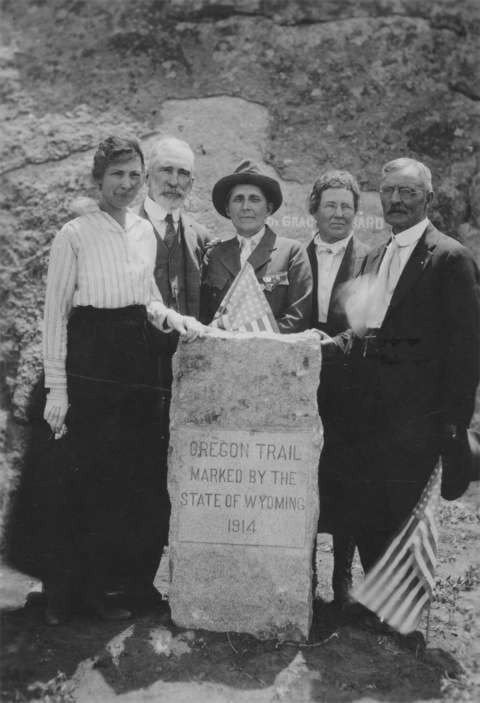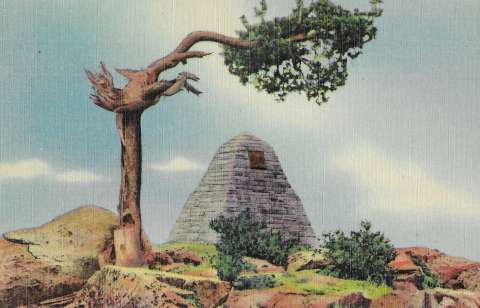Wait, Where’d That Monument Go?
By Kylie McCormick
Heavy stones set in concrete may seem permanent, yet as I’ve been researching Wyoming’s historical markers and monuments, I’ve found they can surprise you—by jumping rivers, say, or clinging to bygone roads.


When I first started to investigate the story around Wyoming’s Oregon Trail Commission (1914-1923), I assumed the placement of monuments would be obvious: on the Oregon Trail. But debates that emerged in the correspondence I read proved me wrong. The initial placement of a monument or marker depended on old-timers locating certain forts or battle fields or how close a road or access point was to the trail being marked. Typically, they attempted to put the marker right next to the trail or historic site. Occasionally, though, I would find a marker located off the trail but close to the highway for those just passing through to take notice. After all, what good is a marker that no one stops to see?
The location debate didn’t always end once the marker was erected. Certainly, two markers Natrona County received in 1914 did not stay where they were initially set. E. Richard Shipp received one marker from the commission, which he placed east of Bessemer Canyon on the road to Alcova, several miles south of where the trail actually went. That same year, Emily Patten, who was serving as the secretary of the commission and State Regent for the Daughters of the American Revolution, wrote to Shipp’s wife, Dickie Letitia Wright Shipp, a fellow Daughter in Casper, “I read in the Tribune recently that some people are dissatisfied with the location of the Oregon Trail posts. Will you tell me about it? The State Engineer, Mr. A.J. Parshall is the one to settle all differences in the location of posts and monuments.”[1]
Unfortunately for Patten, this wasn’t the only marker causing her headaches. “I have been told, repeatedly,” she wrote, "that the Nebr-Wyo. state line monument is in the wrong location entirely, but the State Eng. of Nebraska located it and we all abide by it.” By 1920, grumbling over the location of Shipp’s marker caused the Natrona County commissioners to move the marker out to the north face of Independence Rock, where it was rededicated along with several plaques on July 4th. Likewise, the 1914 marker sent to Clementina Sara Evans Nicolaysen, which was initially placed near the railroad depot, was removed to Fort Caspar around 1926.
And what if the thing being memorialized is what moves? Such is the case with the Ames Monument, arguably the first monument erected in what would be the State of Wyoming. The monument to the Ames Brothers, costing the Union Pacific $64,000, was placed at the highest point on the route of the U.P. Railroad. Completed in 1882, the monument towered alongside the tracks for fewer than 20 years before the route changed. Today the railroad runs several miles to the south of the large monument, which can still be spotted from Interstate-80. Consider, this monument has memorialized that 8,247-foot elevation for 120 years without the tracks alongside it. The railroad it memorializes ran through that spot for only 31 years.
We tend to think of history as unmovable—as permanent as a heavy stone set in concrete. Yet sometimes a new source emerges or a different historian brings a new perspective and our understanding of the story of our past shifts, just ever so slightly—like a marker switching sides on a river or a track moving away from the stone pyramid to an easier route.
[1] Letter from Emily Patten to Dickie Letitia Wright Shipp, Dec. 29, 1914, Daughters of the American Revolution, Casper Club House Records, Fort Caspar DAR
